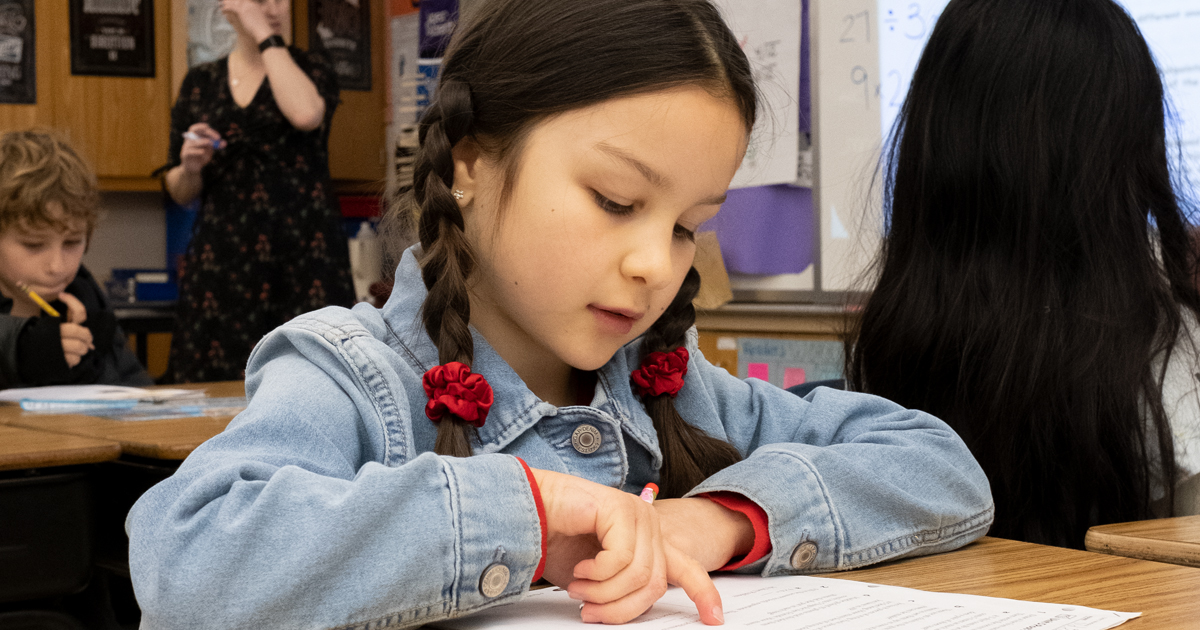Five Principles for Transitioning to Physically Distanced, In-Person Learning
Posted on by Jennifer Folsom

Written by WestEd’s Jennifer Folsom, a version of this post first appeared on the Making Sense of SCIENCE (MSS) Science Corner blog and is posted here with permission. Jennifer is Lead Learning Architect and Associate Director of WestEd’s Making Sense of SCIENCE project.
Distance Learning During the COVID-19 Pandemic, posted on April 11, 2020, detailed five principles that have guided educators and leaders across the country as we navigated the challenges of a pandemic for the last year. Today these same principles can guide us as we chart yet another unexplored course — transitioning to physically distanced, in-person school.
PRINCIPLE 1: Change the learning goals and the learning process.
It is unreasonable to expect educators and students to bounce back to how things were the last time they were at school. We are not the same people we were the last time we set foot in our school buildings. We have new challenges, fears, and traumas. We have fresh skills, especially new life skills and technology skills. We have a renewed focus on the persistence of systemic inequities and their impact on student success. What students, teachers, and leaders learned in the last year was different from any learning we’ve done before. The transition back to in-person school should uncover those learnings and leverage them to accelerate continued learning. If students learned to prepare meals, care for younger siblings, or structure their days, we can affirm those learnings and bridge them into academic work.
PRINCIPLE 2: Design learning activities for the physically distanced in-person learning environment.
In-person school is not going to be what it once was. Students will gather around tables, heads together, working with a set of science supplies. They won’t problem-solve around a shared whiteboard. There won’t be kids moving station-to-station with a buddy. They will be distanced, in masks, and that makes collaboration — a hallmark feature of how humans learn — difficult. We’ll need to rethink our tolerance for loud classrooms, as learners try to be heard by their group members at a distance. We can leverage our outdoor spaces, which allow learners to speak louder to overcome the distance. The technology tools that have worked well to foster engagement, collaboration, and 21st century skill development over the last year can still have a place. We can keep using our digital breakout groups and technology-enhanced collaboration tools (e.g., shared online documents, Jamboards, and simulations). It is often most efficient and effective to choose activities and processes that work well in the physically distanced, in-person learning environment, rather than trying to convert something that works in a different learning environment.
PRINCIPLE 3: Prepare for students’ challenges.
The transition back to school is not just about shifting lessons to a new format. It is about helping students make an enormous transition, during a time of uncertainty, after a year of untold stress and trauma. Students will have anxiety around their families’ health, fear of “being behind”, unease about interacting with their peers again, and new daily routines to adjust to (e.g., when to wake, riding a bus again, regimented lunch times, etc.) There will be deep, unmet needs for socializing and connection. Educators can reassure students and families that they understand these stressors and their impacts and respond with empathy. We can make personal connections with students and their families and have plans for various challenges at the ready.
PRINCIPLE 4: Investigate institutional policies.
The defining features of the upcoming school year are being decided this spring. Everything is up for discussion. How do we embrace acceleration, weave social-emotional learning in the fabric of the school, and create a culture focused on equitable achievement? What is the best way to grade students and deploy teachers and resources? Are all in-person learning models ideal for every student and family? Disturbances are a time to rethink long-held assumptions. If you’re passionate about policies, get involved in helping the decisions get made (and revised, as the case may be). We must double down on all the work we did last year to center responsive relationship-based learning and continue working with fresh eyes.
PRINCIPLE 5: Model a growth mindset.
This transition is an opportunity to be transparent with our students and teachers about trying new things and experimenting. They see that we’re taking risks and inevitably needing to deal with failures. When a well-planned transition to physically distanced, in-person school doesn’t work out (and, in all likelihood, at least some of it won’t), it is an opportunity to demonstrate how to respond to failure. The example of how people can productively respond to challenge and disappointment is a valuable gift. It is a gift we can only give when we fail at something and are confident enough to let others in on our experiences. And most importantly, when you and others fail to live up to expectations, generously dole out all the extra grace you can find because everyone needs it now, even more than they did a year ago.
